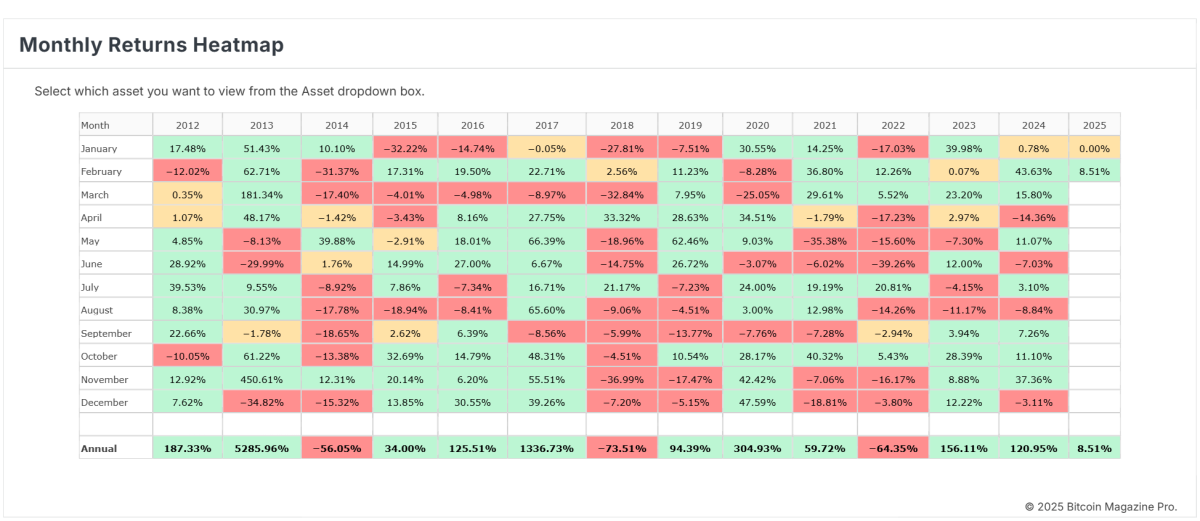Introduction to Gold ETFs
Gold Exchange-Traded Funds, or Gold ETFs, represent a unique investment vehicle that offers investors indirect exposure to the performance of gold prices. Unlike traditional investing methods that require direct ownership of physical gold, Gold ETFs trade like stocks on major exchanges, making them accessible and convenient for individual investors. Each share of a Gold ETF typically corresponds to a specific quantity of gold, allowing investors to participate in the gold market without the complexities associated with owning tangible assets.
The operational mechanics of Gold ETFs are relatively straightforward. When an investor purchases shares of a Gold ETF, they are essentially buying into a fund that holds gold bullion in a secure vault. This structure enables the fund to track the price movements of gold closely. As the price of gold rises or falls in the market, the value of the Gold ETF shares will likewise fluctuate, providing a direct correlation to gold’s market performance. Consequently, this investment option is favored by those looking to capitalize on gold price fluctuations without the logistical challenges of buying and storing physical gold assets.
Investing in Gold ETFs offers several advantages compared to traditional gold investments. One significant benefit is liquidity; Gold ETFs can be bought or sold at any time during trading hours, similar to stocks. This flexibility allows investors to quickly respond to market conditions. Moreover, Gold ETFs generally come with lower fees compared to other forms of gold investment, including storage, insurance, and transaction costs associated with physical gold.
As financial uncertainties continue to rise, the popularity of Gold ETFs has grown substantially as a safe-haven asset. Investors increasingly turn to these funds to hedge against economic volatility, inflation, and currency fluctuations, thereby solidifying their position as a crucial tool for diversifying investment portfolios.
Benefits of Investing in Gold ETFs
Investing in Gold Exchange-Traded Funds (ETFs) offers numerous advantages, making them an attractive option for both new and experienced investors. One of the key benefits is liquidity. Gold ETFs are traded on major stock exchanges, which means they can be bought and sold throughout the trading day at market prices. This ease of trading enhances liquidity, providing investors with the flexibility to enter or exit positions quickly without facing significant barriers compared to physical gold.
Another significant advantage of Gold ETFs is diversification. They allow investors to gain exposure to the gold market while reducing the risks associated with holding physical gold. By including Gold ETFs in a well-rounded investment portfolio, individuals can effectively mitigate risks tied to other asset classes. This diversification can be essential, especially during economic downturns when the value of gold tends to hold steady or even appreciate.
Gold ETFs commonly feature low expense ratios, which further enhances their appeal. Unlike owning physical gold, which may incur costs for storage and insurance, Gold ETFs provide an efficient vehicle for investing in gold without additional costs. This cost-effectiveness allows investors to retain more of their capital, maximizing potential returns over time.
Moreover, the convenience of trading Gold ETFs on exchanges eliminates the challenges of acquiring, storing, and insuring physical gold. This streamlined process attracts a wider range of investors who may be hesitant to manage tangible assets. Lastly, investing in Gold ETFs can serve as an effective hedge against inflation and economic instability. Historically, gold has maintained its value in times of inflation, making Gold ETFs a strategic choice for safeguarding wealth during fluctuating economic conditions. The advantages of liquidity, diversification, low costs, and convenience position Gold ETFs as a robust investment vehicle for those looking to navigate the complexities of the financial market.
How to Choose the Right Gold ETF
Investing in Gold Exchange Traded Funds (ETFs) can provide an effective avenue for individuals looking to add gold exposure to their portfolios. Selecting the right Gold ETF entails analyzing several critical factors that can influence investment performance. One of the first aspects to consider is the fund size. Typically, larger ETFs have higher liquidity, allowing for easier buying and selling of shares without significantly influencing the market price.
Another essential criterion is the tracking error. This metric measures how closely the ETF’s performance matches that of the underlying index or gold prices it aims to replicate. A smaller tracking error indicates that the ETF effectively follows gold price movements, which is desirable for investors seeking precise exposure to gold. It is beneficial to evaluate the historical tracking errors of different funds. A consistent record of low tracking error can suggest a well-managed ETF.
Expense ratios are also pivotal in evaluating Gold ETFs. The expense ratio represents the annual fee charged by the fund manager. Although Gold ETFs generally have lower fees compared to mutual funds, a significant difference in expense ratios can impact overall returns, particularly over the long term. It’s advisable to compare multiple Gold ETFs to identify those with competitive fees.
Finally, performance history is crucial for gauging potential success. While past performance is not always indicative of future returns, it can provide insights into how the ETF has responded to various market conditions. Popular Gold ETFs for beginners, such as the SPDR Gold Shares (GLD) or the iShares Gold Trust (IAU), often have favorable performance metrics alongside competitive expense ratios. By scrutinizing these factors, investors can make informed decisions when entering the gold investment space.
Steps to Start Investing in Gold ETFs
Investing in gold Exchange-Traded Funds (ETFs) can be an effective way to diversify your portfolio and gain exposure to the gold market. To get started, follow these essential steps:
1. Set Your Investment Goals: Determine why you are investing in gold ETFs. Are you seeking a hedge against inflation, or do you want to add a safe-haven asset to your portfolio? Clearly defined goals will guide your investment strategy and help you choose the right ETFs that align with your objectives.
2. Choose a Brokerage: Selecting a broker is crucial for your investment journey. Look for a brokerage that offers access to a range of gold ETFs, competitive fees, and an intuitive trading platform. Ensure the brokerage is reputable and provides the necessary tools and resources for effective trading.
3. Open an Investment Account: After selecting a brokerage, the next step is to open an investment account. This process typically involves providing identification, financial details, and completing various forms. You may choose between a standard brokerage account or a tax-advantaged account like an IRA, depending on your investment goals.
4. Fund Your Account: Once your account is set up, transfer funds to it. You can fund your account via bank transfer, wire transfer, or check. Ensure that you fund your account with an amount that aligns with your investment strategy and risk tolerance.
5. Place Your First Order for Gold ETFs: With your account funded, you can now purchase your chosen gold ETFs. Start by researching the ETFs available and examining their performance, management fees, and underlying assets. When you feel confident in your choice, place your order through your brokerage platform. Consider starting with a smaller investment to gauge your comfort level with this asset class.
By following these steps, you’ll be well on your way to successfully starting your investment in gold ETFs, allowing you to tap into the potential benefits that these financial instruments offer.
Understanding the Risks of Gold ETF Investing
Investing in Gold exchange-traded funds (ETFs) can be an attractive option for those looking to gain exposure to the gold market without having to manage physical assets. However, like all investments, Gold ETFs come with their own set of risks that investors must understand in order to make informed decisions. One significant risk is market volatility. Gold prices can fluctuate based on various factors, including geopolitical events, changes in interest rates, and overall economic conditions. These fluctuations can impact the performance of Gold ETFs, making it essential for investors to be prepared for potential price swings.
Another risk to consider is currency fluctuation. Since gold is often traded in U.S. dollars, any changes in currency value can affect returns for international investors. For instance, a rising dollar can lead to lower gold prices, which may consequently result in diminished returns for those holding Gold ETFs priced in other currencies. This relationship highlights the importance of understanding global economic indicators when investing in Gold ETFs.
Additionally, management risks can arise as these funds are managed by financial institutions that may not always perform optimally. Poor management decisions can lead to underperformance compared to the actual gold market or the benchmarks the ETF aims to track. This aspect underscores the importance of conducting thorough research on the fund’s management team and their track record.
Lastly, investors must also consider the issue of tracking error, which is the discrepancy between the ETF’s performance and the actual performance of gold itself. While many Gold ETFs strive to mirror gold prices closely, factors such as fees, expenses, and fund structure can influence this relationship. Therefore, it is essential for prospective investors to fully understand these risks and include them in their overall portfolio strategy to mitigate potential negative impacts associated with Gold ETF investing.
Strategies for Investing in Gold ETFs
Investing in Gold ETFs can be a strategic component of a diversified investment portfolio. Effective strategies can help investors manage risk and maximize returns in the fluctuating commodities market. One widely recommended approach is dollar-cost averaging, which involves investing a fixed amount of money into Gold ETFs at regular intervals, regardless of the price. This method can mitigate the effects of market volatility by buying more shares when prices are low and fewer shares when prices are high, ultimately reducing the average cost per share over time.
Another important strategy is portfolio rebalancing. As the market fluctuates, the allocation of assets in your investment portfolio may shift, potentially leading to an undesirable risk level. By periodically reviewing and rebalancing your investments, you can ensure that Gold ETFs maintain an appropriate proportion in your overall asset allocation. This may involve selling some Gold ETF holdings when they exceed your target percentage and reinvesting in underrepresented assets. Rebalancing not only helps to control risk but can also improve returns over the long term.
Gold ETFs should also be viewed as part of a broader asset allocation strategy. When constructing your portfolio, consider how Gold ETFs can complement other asset classes, such as stocks, bonds, or real estate. Typically regarded as a hedge against inflation and currency fluctuations, allocating a strategic portion of your investments to Gold ETFs can enhance portfolio stability during economic downturns.
Finally, knowing when to sell your Gold ETF investments is crucial. Market conditions, investment goals, and personal circumstances may necessitate the selling of assets. Setting predetermined criteria, such as a specific price target or percentage gain, can aid in making informed decisions rather than acting impulsively. As with any investment, a well-thought-out exit strategy is essential for maximizing returns.
Resources for Further Learning
For those looking to deepen their understanding of Gold ETFs, a variety of reputable resources are available that offer insights into the intricacies of ETF investing. These resources cover everything from the fundamental principles of ETFs to nuanced discussions regarding market trends, tax implications, and investment strategies.
One of the best starting points is Investopedia, which provides comprehensive articles on investing fundamentals, including a specific section dedicated to ETFs. This platform breaks down complex financial concepts into manageable information, making it an excellent resource for novice and experienced investors alike. They offer tutorials, tips, and industry news that could significantly enhance your knowledge of Gold ETFs.
Another valuable resource is Morningstar. Known for its in-depth analysis and ratings of investment products, this site allows users to access detailed reports on various Gold ETFs. Morningstar provides insights into performance metrics, fees, and risk assessments, enabling investors to make informed decisions based on thorough analysis.
Financial news outlets such as Bloomberg and Reuters are also instrumental in staying updated with the latest market trends and news related to Gold ETFs. Their articles often discuss related economic factors, offering a broader context to the current investment climate.
Lastly, consider educational platforms such as Coursera or Udemy, which offer courses specifically focused on investment strategies, including Gold ETFs. These learning opportunities can be highly beneficial for gaining a structured understanding of ETF investment.
By leveraging these resources, investors can enhance their knowledge base and make more informed decisions in the dynamic landscape of Gold ETF investing.
Recommended Books and Tools
Investing in Gold ETFs can be a strategic choice for building a diversified portfolio. To help you navigate this investment avenue more efficiently, we recommend several books and tools that can enhance your understanding and decision-making process.
First, consider reading “The Intelligent Investor” by Benjamin Graham. This classic text focuses on investment principles that apply across different asset classes, including ETFs. It emphasizes the importance of a disciplined and analytical approach to investing. You can find it on Amazon here.
Another noteworthy title is “Gold ETFs: A Guide to Investing” by Charles G. Keller. This book provides an in-depth exploration of various gold investment vehicles, including ETFs. The author elaborates on the market dynamics affecting the price of gold and guides readers through the intricacies of ETF investments. Acquire a copy from Amazon here.
For tools, we recommend utilizing platforms such as Yahoo Finance and Morningstar for stock market analysis. These platforms offer comprehensive data and insights about ETFs, including performance metrics, expense ratios, and risk assessments. Notably, Yahoo Finance allows you to create a personalized watchlist, making it easier to track your Gold ETF investments.
Additionally, consider investment calculators such as the ones provided by Investopedia. These tools can help you simulate potential returns on your Gold ETF investments, given different market conditions. Understanding how these tools and books can supplement your knowledge and skills will significantly enhance your investment journey.
Conclusion: Making Informed Investment Decisions
In the realm of gold ETF investing, understanding the nuances involved is crucial for success. Throughout this guide, we have explored significant aspects of gold ETFs, including their structure, advantages, and potential risks. By diversifying their portfolio with these assets, investors not only gain exposure to gold but also harness the liquidity and ease of trading that ETFs provide. The information presented emphasizes the importance of having a clear investment strategy aligned with individual financial objectives.
As with any investment, assessing one’s risk tolerance is essential. Gold ETFs can serve as a hedge against inflation and market volatility; however, investors must remain aware of the market dynamics that can affect gold prices. Engaging in thorough research and staying abreast of economic indicators can significantly enhance decision-making processes. Market conditions can change, and adapting strategies may become necessary to maintain portfolio effectiveness.
Furthermore, continuous learning plays a pivotal role in becoming a successful investor. Financial markets are constantly evolving, and so should one’s investment approach. Regularly reviewing performance and adjusting strategies based on emerging trends ensures that one remains responsive to shifts in the market landscape. Keeping track of developments in the global economy and adapting to changes in gold demand can lead to more informed investment decisions.
In conclusion, gold ETF investing offers valuable opportunities for those willing to navigate its intricacies thoughtfully. By setting clear goals, understanding risk tolerance, and committing to ongoing education about market trends, investors can enhance their capacity to make sound decisions in this domain. The pursuit of knowledge will ultimately empower individuals to align their investments with their financial aspirations, fostering a robust investment framework that can withstand the test of time.










